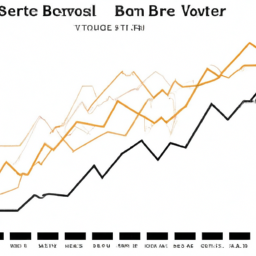Risk is an inherent part of investing. Every investment carries some degree of Risk, and it is important to understand the level of Risk associated with a particular investment before making a decision. Risk measurement is a key concept in investment management, and there are several metrics used to quantify Risk. Two of the most commonly used metrics are standard deviation and beta.
Standard deviation is a statistical measure that calculates the amount of variability or dispersion of a set of data from its mean. In finance, standard deviation is used to measure the volatility of an investment's returns. A higher standard deviation indicates that an investment's returns are more volatile, and therefore Risk.
Beta, on the other hand, measures the sensitivity of an investment's returns to changes in the overall market. Beta is a measure of systematic Risk, or the Risk that cannot be diversified away. A beta of 1 indicates that an investment's returns move in line with the overall market, while a beta greater than 1 indicates that an investment's returns are more volatile than the market, and a beta less than 1 indicates that an investment's returns are less volatile than the market.
Both standard deviation and beta are important metrics in Risk measurement, but they measure different types of Risk. Standard deviation measures total Risk, including both systematic and unsystematic Risk, while beta measures systematic Risk only. Therefore, a high beta stock may have a higher Risk than a low beta stock, even if their standard deviations are the same.
When evaluating investments, it is important to consider both standard deviation and beta. A high standard deviation stock may be appropriate for an investor with a high Risk tolerance, but may not be suitable for a more conservative investor. Similarly, a high beta stock may be appropriate for an investor seeking higher returns, but may not be suitable for an investor who is more Risk averse.
Risk management techniques can be used to help assess the Risk associated with an investment. Diversification is a common Risk management technique that involves investing in a variety of assets to reduce the overall Risk of the portfolio. By diversifying across different asset classes, sectors, and geographic regions, investors can reduce the impact of any one investment on the overall portfolio.
Another Risk management technique is the use of stop-loss orders. A stop-loss order is an order placed with a broker to sell a security when it reaches a certain price. This can help limit losses in the event that the investment's price declines.
Investors should also consider the correlation between different investments when constructing a portfolio. Correlation measures the degree to which two investments move in the same direction. By selecting investments with low correlation, investors can reduce the overall Risk of the portfolio.
In conclusion, measuring Risk is an important aspect of investment management. Standard deviation and beta are two common metrics used to quantify Risk, and both should be considered when evaluating investments. Risk management techniques can also be used to help assess the Risk associated with an investment, including diversification, stop-loss orders, and correlation analysis. By understanding and managing Risk, investors can make informed decisions and achieve their investment goals.
